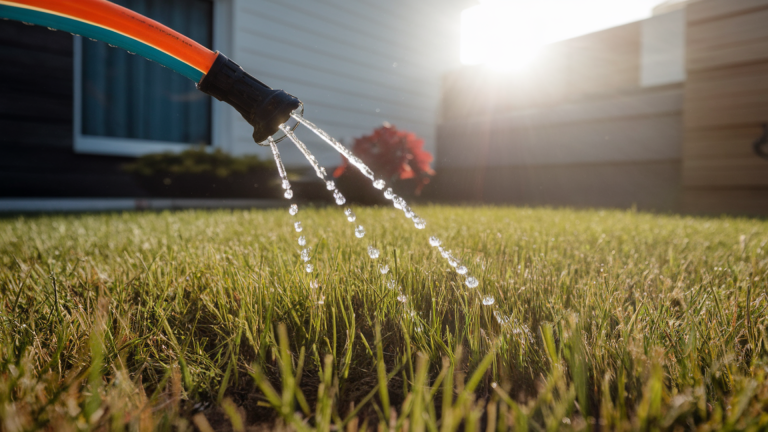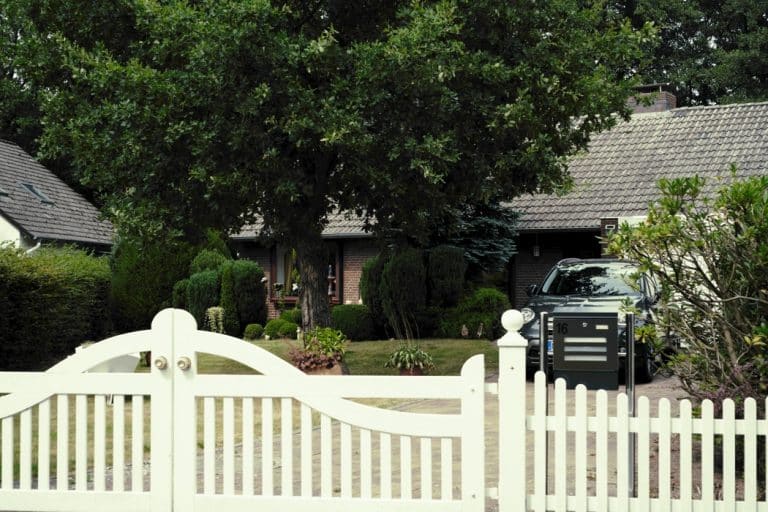Starting a new lawn is exciting, but it can also feel a little overwhelming. Whether you’re using grass seed, sod, or hydroseeding, giving your lawn the right care from the beginning makes a big difference. A strong start means thicker grass, fewer weeds, and less work later on.
The first few weeks are the most important. This is when roots start to grow and your lawn begins to take shape. With the right steps, such as watering, mowing, and fertilizing, you can help your grass grow lush, full, and healthy.
In this guide, we’ll walk you through everything you need to know about caring for a brand-new lawn. It’s easier than you think! From planting tips to mowing rules, you’ll learn simple ways to keep your lawn looking great from day one.
Why New Lawn Care Matters
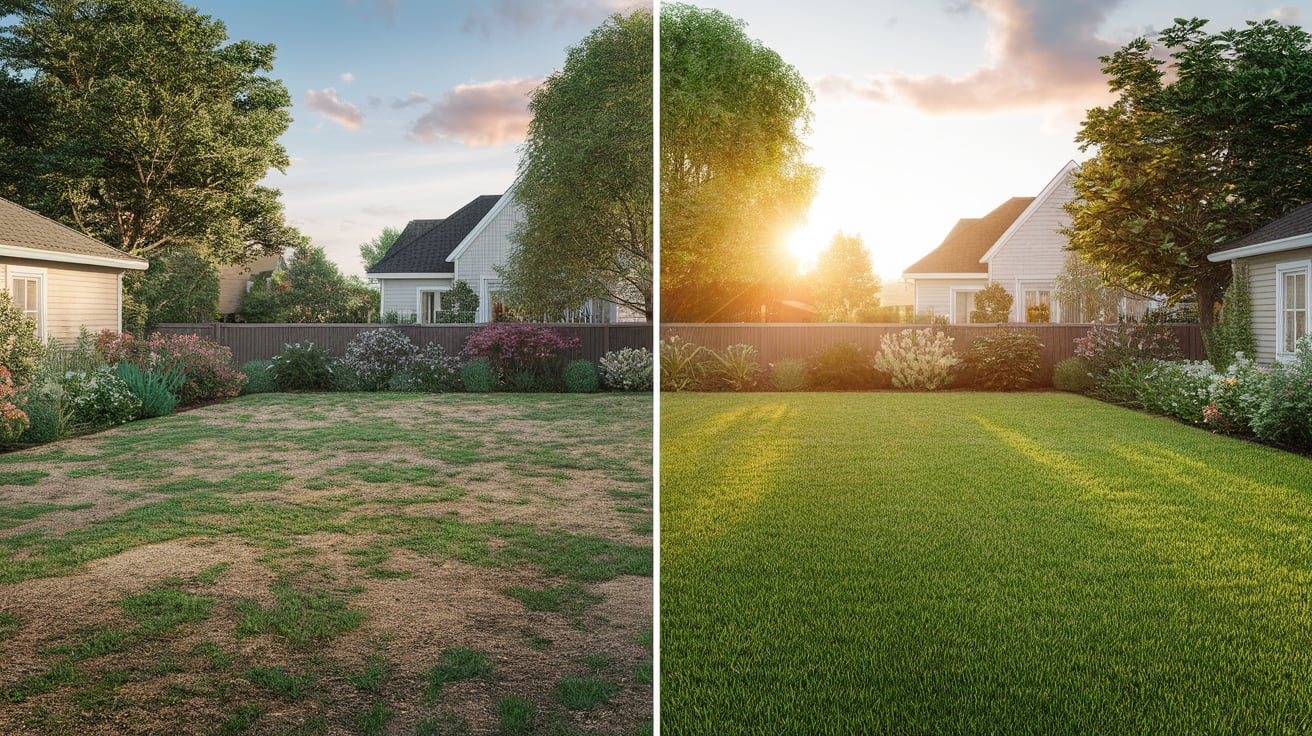
Caring for a new lawn is one of the most important steps in growing healthy grass. What you do in the first few weeks can affect how your lawn looks for years. A little extra care at the beginning helps your grass grow strong roots and fill in evenly.
When you take the time to water, feed, and mow the right way, you’ll avoid common problems like weeds, bare spots, and thin patches. It’s much easier to prevent problems now than to fix them later.
New grass is still fragile, so it needs a little help getting started. With the right care early on, your lawn will grow faster, look healthier, and be easier to maintain over time. Whether you’re planting from seed or laying sod, a strong start gives your lawn the best chance to thrive.
Planting Your New Lawn
Once you’ve prepared the soil and picked your method—seed, sod, or hydroseeding—it’s time to plant your new lawn. This step is all about setting your grass up for a strong and healthy start. Each method has its own planting process, but all of them need care and attention to grow well.
Grass Seed: How to Plant It
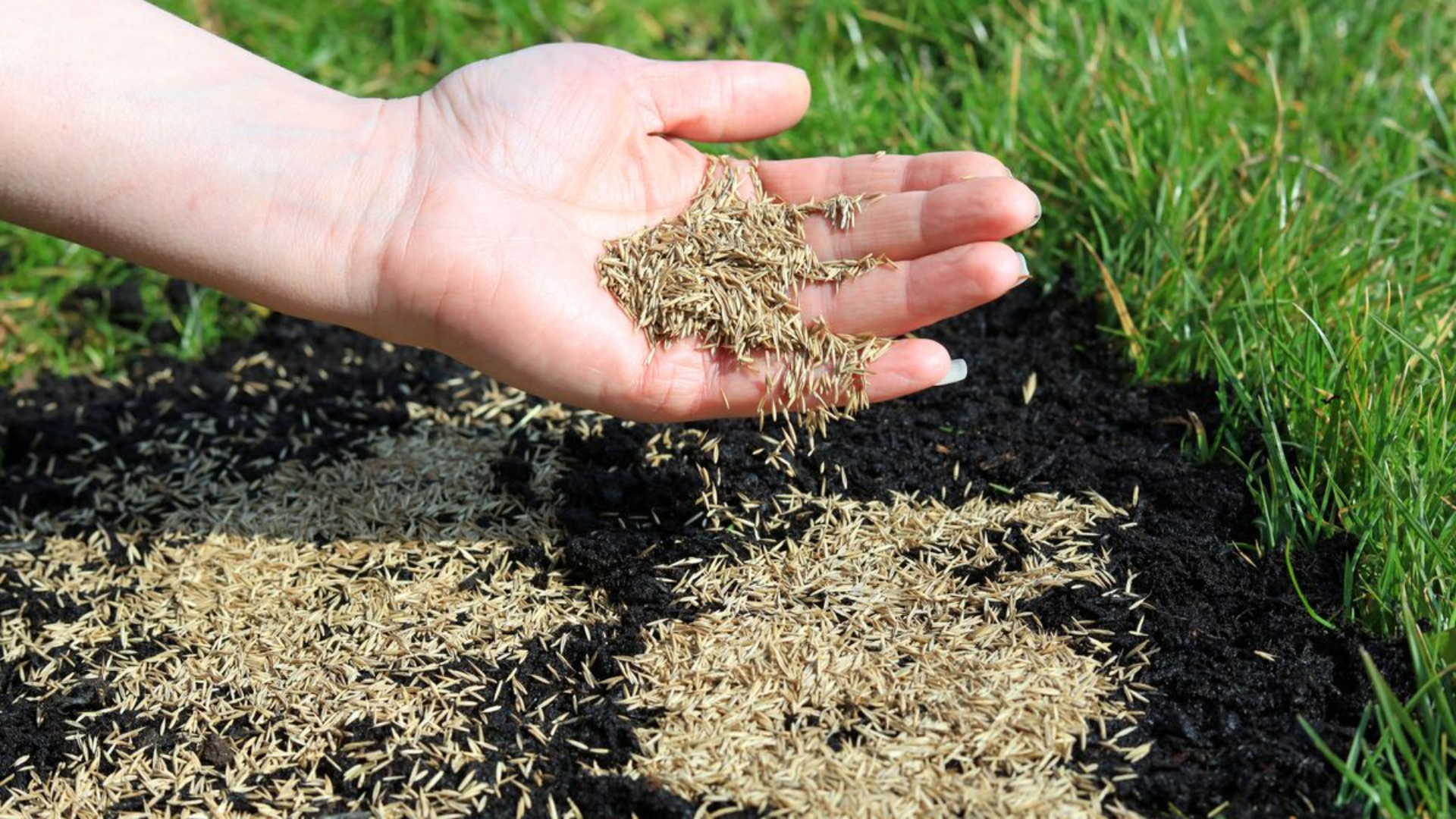
Grass seed is the most budget-friendly option. It’s great for large areas and offers a wide variety of grass types. It does take longer to grow, and you’ll need to keep the soil moist while it’s sprouting.
- Start with a Smooth Surface: Rake the soil to level it out and break up any clumps. This helps the seed make good contact with the soil.
- Spread the Seed Evenly: Use a seed spreader for even coverage. Make one pass in one direction, then go over the same area in the opposite direction to avoid missed spots.
- Rake Lightly to Cover the Seed: Gently rake the soil so the seed is covered with a thin layer of dirt, just enough to keep it in place without burying it too deep.
- Press the Seed into the Soil: You can use a lawn roller or simply walk over the area to press the seed into the soil. This helps it stay put and improves germination.
- Water Gently and Often: Mist the area lightly once or twice a day. Keep the soil moist, but don’t soak it. Continue watering until the grass is about 2–3 inches tall.
Sod: How to Lay It Properly
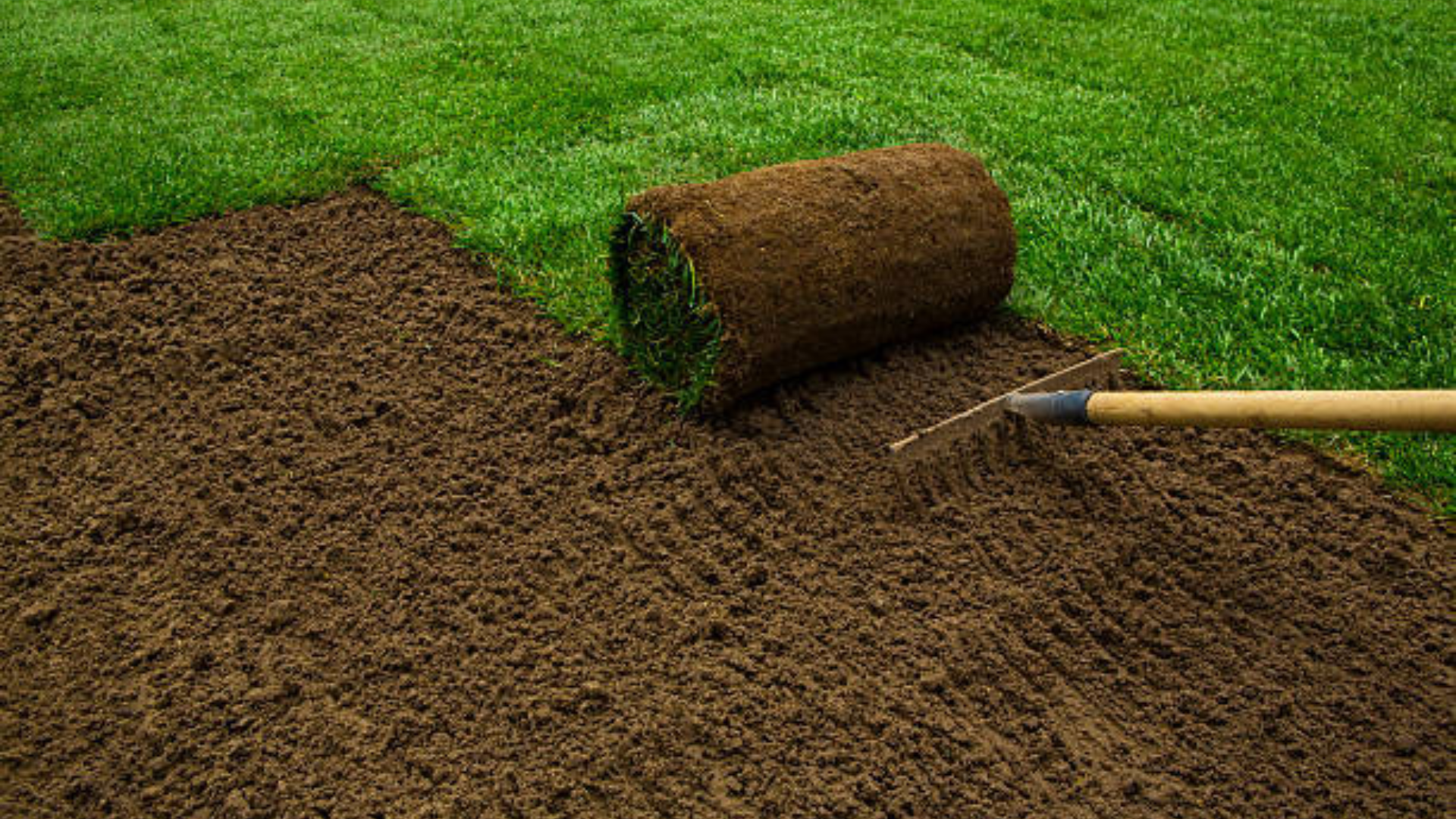
Sod gives you an instant green lawn. It’s more expensive but perfect if you want fast results. You can go to a sod store to pick up rolls of mature grass with roots, which are laid like tiles across your yard.
- Start Along a Straight Edge: Lay the first row of sod along a sidewalk, driveway, or garden bed for a clean line. This helps keep everything straight.
- Stagger the Seams: Place the next row so the edges don’t line up, like bricks. This makes the lawn stronger and helps prevent gaps.
- Press the Edges Together: Lay each piece tightly next to the one before it. Avoid overlapping, but don’t leave space between pieces either.
- Cut as Needed: Use a sharp knife or spade to trim pieces around trees, flower beds, or corners.
- Water Right Away: Soak the sod right after laying it. For the first 2–3 weeks, keep the sod moist to help the roots grow into the soil.
Hydroseeding: What to Expect
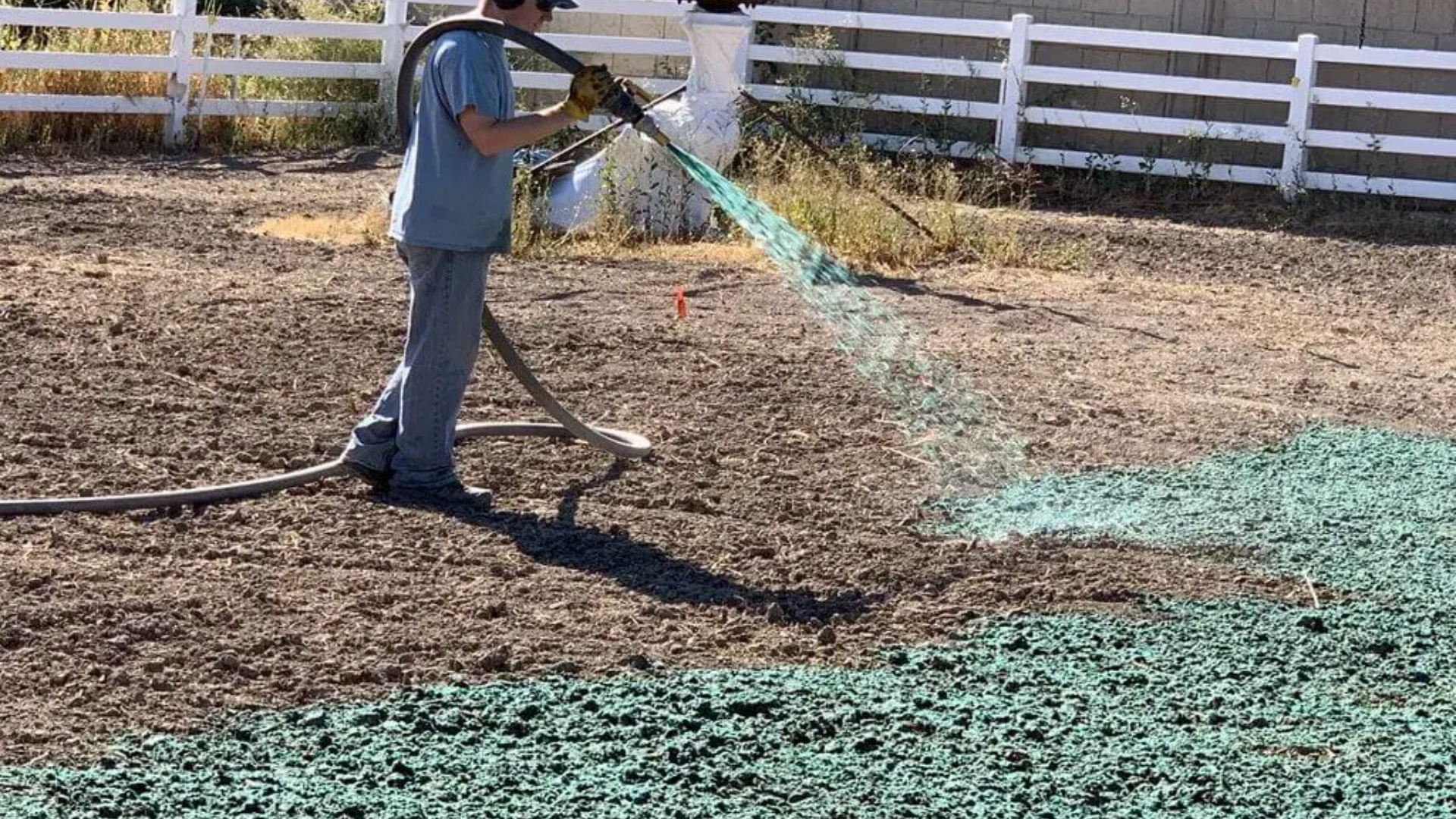
Hydroseeding sprays a mix of seed, water, and fertilizer. It’s quicker than regular seeding and works well on hills or big open spaces. It costs more than seed but less than sod.
- Hire a Pro or Rent Equipment: Hydroseeding uses a special sprayer to apply a mix of seed, fertilizer, mulch, and water. It’s great for large areas and slopes.
- Keep the Area Moist: Water the hydroseeded area lightly a couple of times a day. The mulch will help keep it from drying out.
- Stay Off the Area: Don’t walk on the lawn for at least 4–6 weeks. Grass will begin to grow in 7–14 days, but the roots need time to settle.
- Expect Some Patchy Spots: This is normal. You can reseed any thin areas once the rest of the lawn is strong enough.
Planting your new lawn the right way takes time and patience, but it’s worth it. With care, your grass will take root, grow thick, and become a lush, green space you’ll enjoy for years to come.
First Weeks of New Lawn Care
The first few weeks after planting are the most important for your new lawn. This is when the grass starts to build roots, take in nutrients, and grow stronger. No matter which method you used—seed, sod, or hydroseeding—your lawn needs gentle care and attention during this time.
Watering Schedule
New grass needs to stay moist so it can grow. Watering often and lightly is key.
- For Seeded Lawns: Water 1–2 times a day to keep the soil damp, especially in hot or windy weather.
- For Sod: Water deeply right after laying it, then keep it moist every day for the first two weeks.
- For Hydroseeding: Light watering 2–3 times a day at first, then reduce as grass starts to grow.
Avoid puddles and soggy spots—too much water can cause rot or mold.
Avoid Foot Traffic
New grass is still fragile. Try not to walk on it for at least 3–4 weeks. Stepping on it too early can flatten young blades or damage roots that are just starting to grow. If you need to walk across the lawn, use a wooden board to spread out your weight.
Watch for Germination
Grass seeds usually start to sprout in 7 to 21 days, depending on the grass type, weather, and how well the area stays moist. At first, growth will look thin and patchy—this is totally normal. Don’t worry! The lawn will fill in as the roots strengthen and more blades grow.
Keeping a close eye on your lawn during these first few weeks helps prevent problems before they start. A little patience and daily care now will lead to a thick, green lawn that’s much easier to care for later on.
When and How to Mow a New Lawn
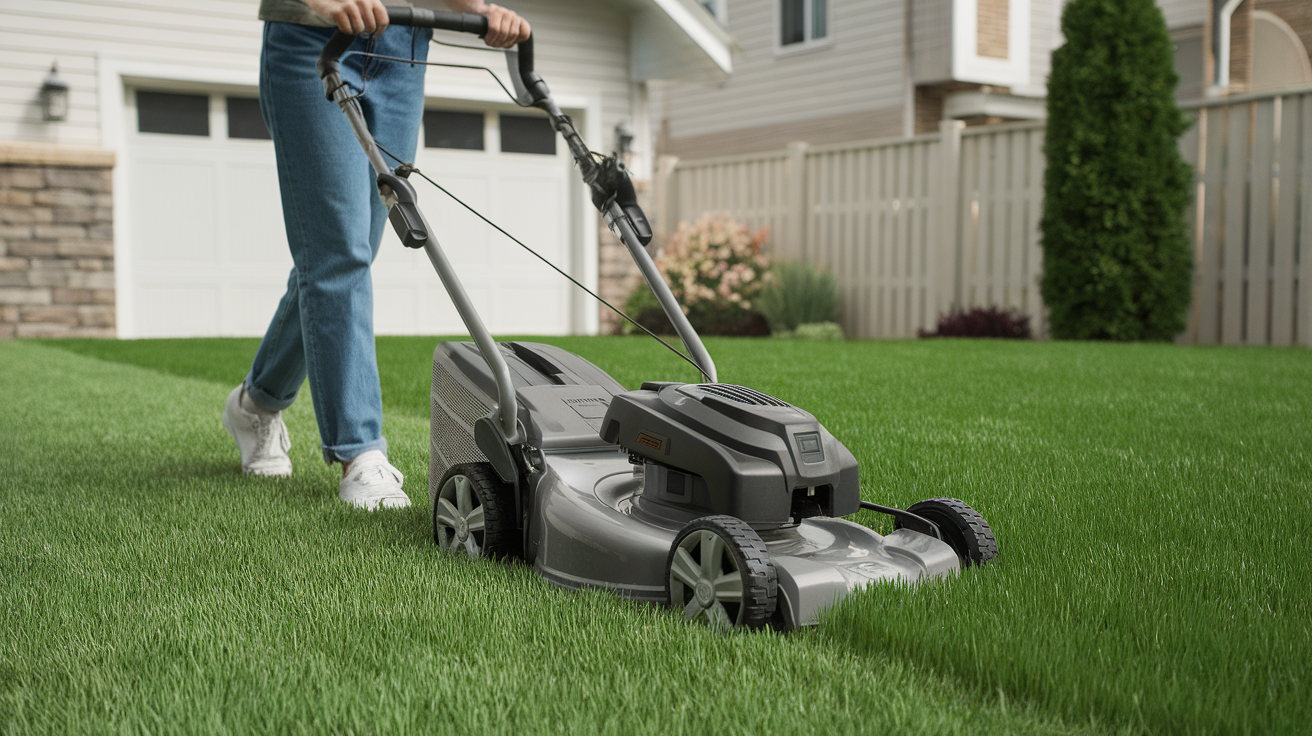
Mowing your new lawn for the first time is an important step, but timing is everything. If you mow too soon, you could damage the new grass and slow down its growth. When done right, mowing encourages the grass to grow fuller and stronger. Here’s how to do it safely:
1. Wait Until the Grass Is Tall Enough: Don’t rush to mow. Wait until your new grass is about 3 to 4 inches tall. This usually takes about 3 to 4 weeks after planting, depending on the weather and how fast your grass is growing.
2.Use Sharp Blades: Dull mower blades can tear young grass instead of cutting it cleanly. Tearing damages the tips and makes the grass turn brown. Before mowing, check your mower and sharpen the blades if needed.
3. Don’t Cut Too Much at Once: Follow the “one-third rule”: only cut off the top third of the grass at a time. Cutting too short can shock the new lawn and weaken the roots.
4. Mow When the Grass Is Dry: Wet grass can clump and clog your mower. It also causes uneven cuts and can leave ruts in the soft soil of a new lawn. Wait for a dry day so you get a clean, even mow.
5. Take It Slow and Easy: Go slowly the first time you mow. Don’t rush or make sharp turns that could pull up the grass. If your mower is heavy, consider using a lighter one for the first few cuts.
Mowing the right way helps your new lawn grow thicker and healthier. It might seem like a small step, but it makes a big difference in how your lawn looks and how well it lasts.
Feeding and Fertilizing Your Lawn
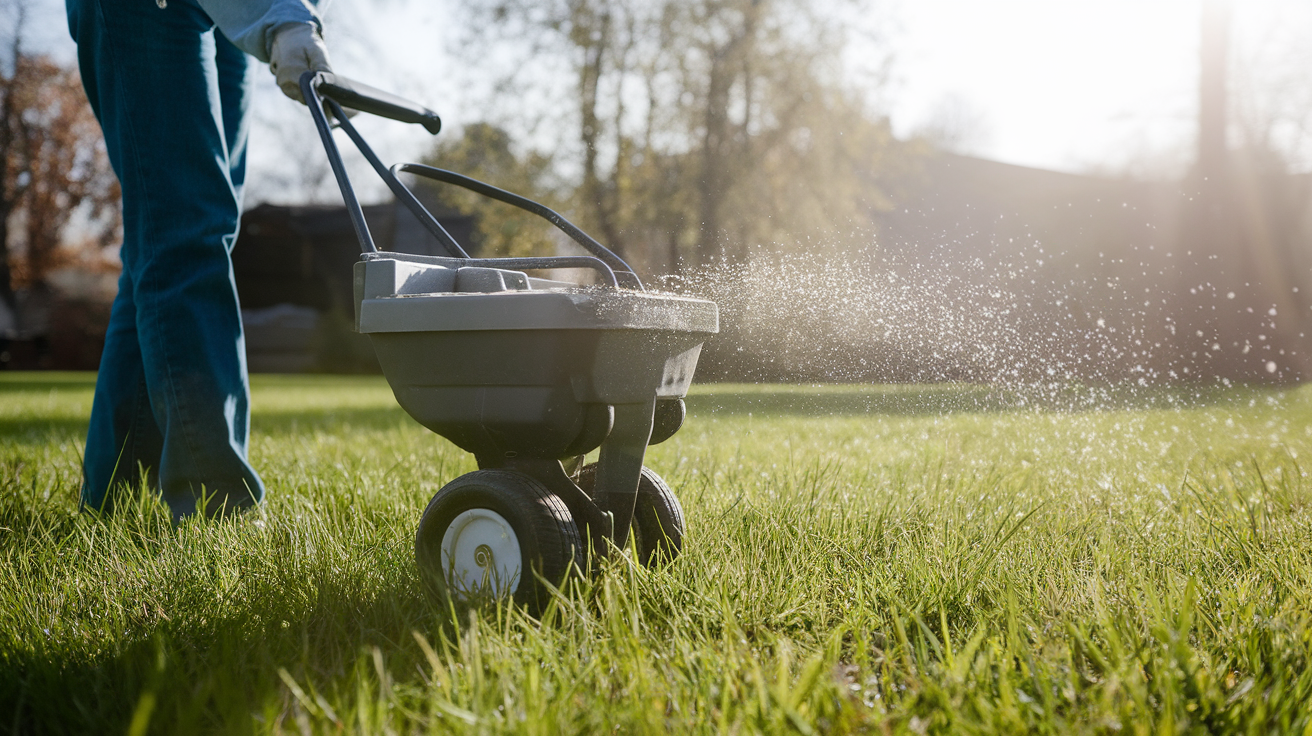
Once your new lawn starts growing, it’s time to think about fertilizer. The right nutrients help your grass grow thick, green, and healthy, but timing matters.
Start with a starter fertilizer made for new lawns. It contains extra phosphorus to help roots grow deep and strong. Apply it at or just before planting, and always follow the directions to avoid using too much.
Too much fertilizer can burn young grass and cause yellow patches. If you’re unsure, use less and add more later.
After about 4–6 weeks, once you’ve mowed once or twice, you can switch to a regular lawn fertilizer. Choose one that fits your grass type and climate, and apply lightly at first.
Always water after fertilizing to help nutrients soak into the soil. Feeding your lawn the right way sets the stage for thick, healthy growth that lasts.
Common New Lawn Problems and Fixes
Even with good care, new lawns can run into a few bumps along the way. The good news? Most problems are easy to fix if you catch them early.
1. Patchy or Thin Areas: It’s normal for a new lawn to look uneven at first. Some spots may grow faster than others, or not at all.
Fix: Wait until the lawn is more established, then reseed the bare areas or add small patches of sod. Keep watering as usual.
2. Weeds Popping Up: Weeds can sneak in, especially if the soil wasn’t fully cleared before planting.
Fix: Wait until your grass is well rooted (about 6 weeks), then pull weeds by hand or use a gentle, grass-safe weed spray.
3. Yellow or Dry Grass: If your lawn starts turning yellow or looks dry, it’s usually a watering issue.
Fix: Make sure you’re watering enough but not overwatering. Grass should stay lightly moist—never soggy or bone dry.
4. Soil Erosion or Washed-Out Seed: Heavy rain can wash away seeds or leave grooves in your lawn.
Fix: Lightly rake the area, add more seed or soil, and gently water. Use straw or mulch to protect the spot next time.
5. Fungus or Mold: New lawns can sometimes grow white or gray fuzz, especially if they’re kept too wet.
Fix: Cut back on watering a bit and allow more sunlight in. If needed, treat with a lawn-safe fungicide.
Don’t worry if things don’t look perfect right away. With a little care and patience, your lawn will fill in and become thick, green, and beautiful in no time. Most issues are quick to fix once you know what to look for!
Conclusion
Caring for a new lawn might seem like a big job, but with the right steps, it’s actually pretty simple. Whether you planted grass seed, laid sod, or tried hydroseeding, what you do in the first few weeks makes a big difference. Watering regularly, mowing at the right time, and using the right fertilizer all help your lawn grow strong, green, and healthy.
Don’t worry if things look a little patchy at first—that’s totally normal. With patience and a little care, your lawn will fill in and improve over time. Keep foot traffic low, watch for signs of problems, and fix small issues early.
Before you know it, you’ll have a lush, beautiful yard you can be proud of. Follow these simple tips, and your new lawn will stay healthy for years to come.


